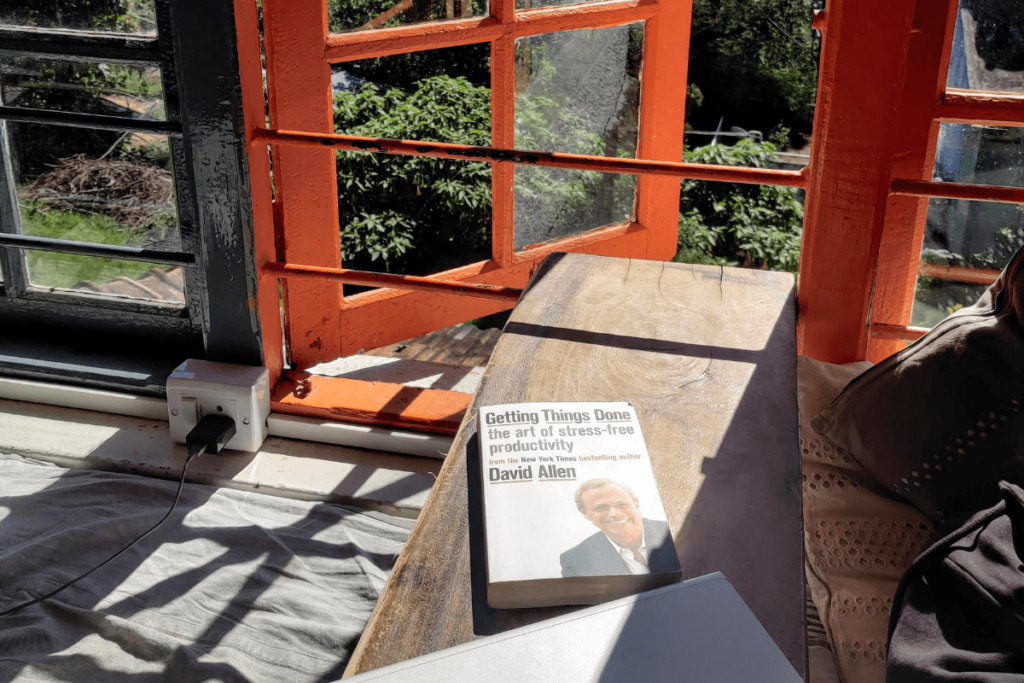Getting Things Done. Every day of our lives, we’re trying to get shit done and keep a tab on the countless projects we start and dream of starting.
Personal and professional to-do lists, catching up on world news, creating content for LinkedIn, Twitter, IG, Clubhouse, Tiktok, etc., etc., dreaming new projects; the list is endless.
In the past 2 years, I tried many task managers, used Asana, Trello, and Notion, and then increased my reliance on notebook planners. It all worked for a while and then it suddenly didn’t. I needed a new system.
Tim Ferris introduced me to David Allen through one of his podcasts. The guy behind the Gettings Things Done (GTD) philosophy. Then I saw many creators sharing their take on GTD and its spin-off templates to incorporate into my life.
I decided to go straight to the source and purchased his book during the lockdown. I thought I’ll finish it in 3 days and come up with a brand new system to plan my day/weeks/months, track all my projects, and free up my mind.

That didn’t happen. It’s been 5 months and I have only read 100 pages of the 300-page book. (not blaming the book here. I’ve been reading 4 books a month on average but this one is very action-oriented and thus I procrastinate)
Part of me wants to have a neat system to manage life. Another part of me likes it being messy and fixing it daily. I’m trying to find the balance.
As I am moving forward with the book, I thought I’ll share short summaries of frameworks that help guide my thinking. Partly so I can refer back to them with ease in the future.
In Chapter 3, David talks about the five phases of project planning and getting projects creatively underway. It’s a fairly straightforward process that brings a lot of clarity when starting something new, restarting old projects, or just fixing what’s happening.
I’m sharing a summary of it here:
1. Define Purpose and Principles
Purpose – Why of the project?
Purpose helps you to:
- define success
- create decision-making criteria
- align resources
- motivates you
- clarifies focus
- expands options
Principles: expected standards and values that define boundaries of your planning
Example: “I would give others free reign to do this as long as they……” As long as they what? (stayed in budget, satisfied client, etc.)
Purpose provides the juice and direction. Principles define the parameter of action and the criteria for excellence of conduct.
2. Outcome Visioning
- Get a clear picture of what success would look, sound, and feel like.
- Imagine an Actual blueprint of the final result.
- Clarifying Outcomes (knowing what you want) is the most powerful life skill.
“Something automatic and extraordinary happens in your mind when you create and focus on a clear picture of what you want.”
3. Brainstorming
Capture Ideas – use mind mapping tools
Distributed cognition – gettings things out of your head – building an extended mind
While brainstorming in a group:
- Don’t judge, challenge, or evaluate
- Go for quantity, not quality
- Put analysis and organization in the background
Brainstorming bridges the gap between what and how.
4. Organizing – What’s the plan?
- Identify the significant pieces
- Sort by (1 or more) – components, sequences, priorities
- Add details as required
- What are the things that must occur to create the final result? In what order must they occur?
- What is the most important element to ensure the success of the project?
5. Identifying Next Actions
- Decide on the next actions to make the first component happen
- Decide on Next Actions in the planning process
To what degree of detail should you plan a project? According to David Allen, to the point where you stop worrying about it. Most times, it will be enough to define one next action.
Read the full book for a galore of information on productivity: Getting Things Done.


